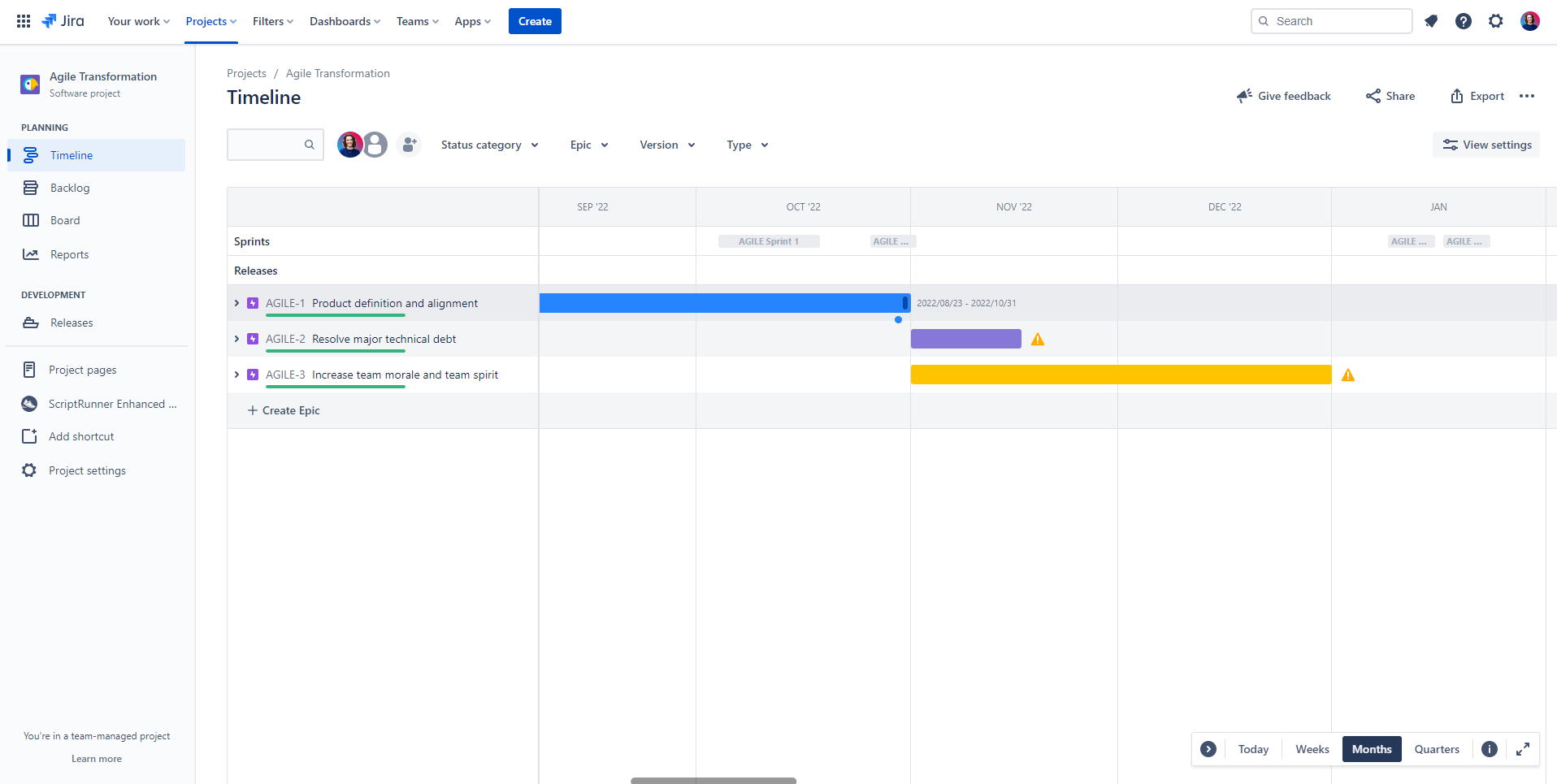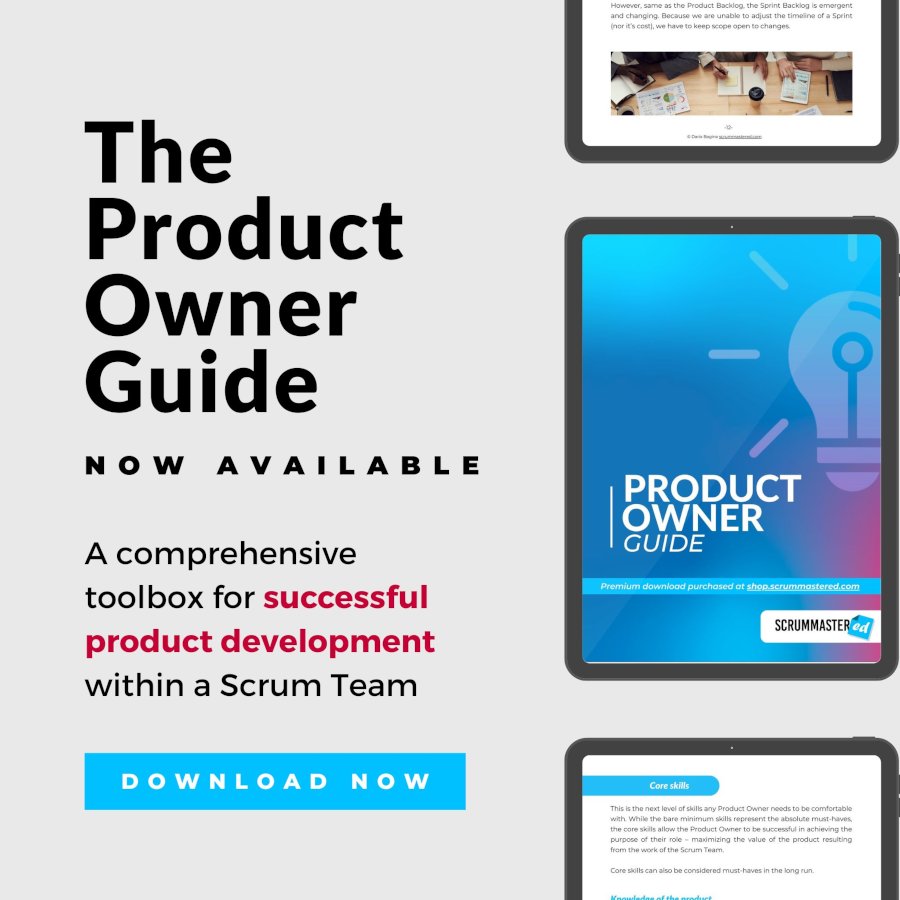Contrary to the popular opinion in Scrum and Agile, we may need to have some dates and forecasts, and it is absolutely fine to use various agile practices and methods in order to create those forecasts and plans.
The most important part here is to still stay true to the agile values and principles. So in this video, I’d like to share some of the ways how you can use various product tools to help you create forecasts, plans, and potential delivery dates, and also create transparency with your stakeholders around how your team is progressing toward goals.
An important note here:
I’m going to share a short clip from one of my mentorship sessions where I talk about roadmaps, using estimations, and creating forecasts and plans with your Product Owner (whether you’re a Scrum Master helping a Product Owner, or a Product Owner yourself).
Why I chose this clip specifically
In this clip, I really deep dive into how I did this roadmapping and estimations with one of the teams I worked with. I’m giving real-life examples, and I think it can be extremely valuable.
I hope that this is something that can help you really build good roadmaps, and good plans, but more importantly build relationships with your stakeholders through building and creating transparency around what your team is working on and what the progress is toward their goals, release milestones, and objectives.
I’m gonna be deep diving more specifically into how a Scrum Master would help a Product Owner. What are some of the things that the Scrum Master can do to support the Product Owner? Whether the Product Owner knows how to do these things or not?
If you are a Scrum Master, you still need to know what those practices are and how to use them,
What a Product Owner needs from a Scrum Master
The Product Owner’s main concern is how they can work more effectively and communicate better with the team. This is where the Scrum Master steps in to help with roadmapping and forecasting. Let’s dive into what these terms really mean!
So, a roadmap is basically a way to show what the team plans to deliver in the next few months. Picture it like a map guiding you through your journey.
For example, imagine we’re working on a roadmap for the second quarter of 2023, which covers three months. We sit down and look at all the stuff the company wants to build (which is usually wa-a-a-ay too much).
Then we prioritize the items and decide which ones are the most important.
Once we have that information, we share it with the teams and ask for their estimates.
These estimates are usually high-level (really really really high-level) because we may not have all the nitty-gritty details yet. But we need to get a sense of how much work we can accomplish. It’s like making an educated guess, you know? It’s guestimating, ok?
To create a forecast for our roadmap, we look at our team’s past performance a.k.a. velocity.
What’s velocity? I have a video on how to calculate velocity you may want to watch.
But in short, velocity is how much work we’ve been able to accomplish in previous sprints.
Let’s say on average, we accomplish 100 story points per sprint.
Our worst case was 70 points, and our best was 130. Pretty impressive, right?…
>>> That was a trick question! Velocity is a made-up number anyway, so it doesn’t tell us how well the team really did.
Now, let’s imagine we have six sprints in the second quarter (assuming two-week sprints). So, in total, we estimate that we can complete around 600 story points during that time.
With this information, we go back to the roadmap and start planning our releases. We look into our high-level estimates and see how much work can fit into 600 points.
It’s NOT a guarantee, but just a way to forecast. Here is my mental model of how these calculations came about:

And here is the roadmap in Jira:

The roadmap helps the Product Owner communicate the team’s plans to stakeholders.
It’s like a visual guide that shows what we’re working on and when we plan to release it.
Facilitating backlog refinements
The Scrum Master plays a key role in all of this by helping with metrics and facilitating estimations. They can provide insights into best-case and worst-case scenarios, giving the Product Owner a better understanding of what the team can achieve. They can also facilitate refinements.
It’s crucial to involve the whole team in these discussions, not just the team leads. Everyone should be aware of what’s coming and have a say in the planning process.
Sometimes, the Product Owner might need to gather more information from other teams or stakeholders before making decisions.
Refinement sessions usually happen once a week, but the duration may vary. It’s a time for the team to come together and ensure they understand the upcoming work. Sometimes, it’s quick and straightforward, while other times, there may be more in-depth discussions, especially when preparing for the next quarter’s roadmap.
So, the key is to start preparing ahead of time and involve the right people. You still need the most recent data, but you also don’t want to wait until the very last moment.
The Scrum Master can help guide the process, but it’s a collaborative effort. By leveraging past performance, estimations, and lively discussions, the team can create a well-thought-out roadmap that sets them up for success in delivering awesome products!

Guide to creating great products
Perfect for new Product Owners and Scrum Masters coaching Product Owners.
In Conclusion
That was it for this video, and that was the short clip that I wanted to show you.
If you want to learn more about roadmapping and working with Product Owners, I recommend looking into my Product Owner guide. And if you need hands-on guidance on your Scrum Master journey, check out my mentorship program.



